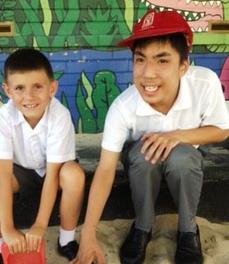Social Stories

The term ‘social stories’ was created by Carol Gray. The Gray Center website provides a full explanation of what social stories are.
Social stories should be written in the affirmative using positive language and instruction
Social stories can be produced in both a physical and digital form
Chat Books
A chat book is an augmentative form of communication which uses templates that reflect the child’s daily life – at school, at home and within the community.
This resource is for people supporting children who are learning to communicate using aided symbols such as pictographs, graphic symbols and whole written words.
Chat books can be in a physical form where the child flips through a range of folders covering specific topics
Chat books can be in an interactive electronic form using iPad and iPhone apps such as Proloquo2go

They have been found to be an effective tool for children with autism or Asperger’s disorder. Social stories assist children with autism to develop greater social understanding.